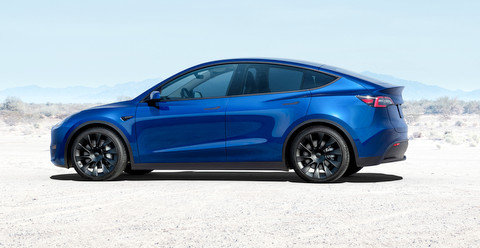As Always, the Devil Is in the Details
The recently passed Inflation Reduction Act of 2022 has many significant implications for the country’s sustainability. One of the most intriguing of these changes for car buyers is a revamped electric vehicle (EV) tax credit. Here’s everything potential EV buyers need to know about it.
How Much Can You Get from the EV Tax Credit?
The new EV tax credit, like the one that preceded it, offers up to $7,500 for electric passenger cars and light trucks. However, not everyone who applies for it will receive the full $7,500.

From now until January 1, 2023, EV buyers will receive $2,500 for an EV with a battery capacity of at least 5 kilowatt-hours (kWh). They’ll get an additional $417 for every kWh over that minimum, capping at $7,500.
After January 1, 2023, the way these credits work will change. You’ll be able to get $3,750 for buying EVs with at least 40% of their battery’s minerals coming from or being recycled in the U.S. You’ll get the other half of the credit if the final assembly of at least 50% of the battery’s components happens in the U.S.
A tax credit also applies to used EVs. The new system offers either 30% of the vehicle’s value or $4,000, whichever is less.
These changes mean a higher minimum tax reward for EV buyers, though they also narrow the scope of which vehicles qualify for these credits. Buyers looking for more savings can make other sustainable purchases. For example, you can get up to $300 for installing efficient water heaters in your home.
How Do You Qualify for the EV Tax Credit?
For new cars, buyers’ modified adjusted gross income (MAGI) must be lower than or equal to $150,000 for individual filers. Married couples filing jointly can have incomes up to $300,000, and people filing as the head of a household must have a MAGI lower than $225,000.
Used EVs are slightly different, with a maximum MAGI for single taxpayers of $75,000. Joint filers’ maximum MAGI is $150,000, and heads of household’s MAGI must not exceed $112,500.
When Does the Tax Credit Go Into Effect?
It’s important to note that the EV tax credit’s requirements will change over time. The first change to take effect is the final assembly rule, which started on August 16, 2022. From then until January 1, 2023, EV credits will work mostly like they used to, but 50% of the battery’s components must come from the U.S.
On January 1, 2023, the new tax credit system and income restrictions take effect, as do the initial battery mineral and component regulations. However, these will change.
The required percentage for minerals coming from the U.S. will rise to 50% in 2024, then 60% in 2025, 70% in 2026 and 80% in 2027. Similarly, the components whose final assembly must happen in the U.S. will rise to 60% in 2024, 70% in 2026, 80% in 2027, 90% in 2028 and 100% in 2029.
What Cars Are Eligible for the Tax Credit?

With 65% of the global cobalt supply coming from the Democratic Republic of the Congo, many EVs today don’t meet the new standards. Vehicles will also lose eligibility when at least 200,000 of them sell in the U.S. The Department of Energy has a tentative list of qualifying vehicles you can use to see if the car you want is eligible.
[Ed note: GM and Tesla have already hit the manufacturer sales cap so their models are off the incentive list. Plug-in hybrids (PHEVs) are eligible and make up a good portion of the list). Full electrics on the current list include three Fords (F-150 Lightning, Mustang Mach-E, E-Transit), Lucid Air, Nissan Leaf, three Rivians (EDV, R1S, R1T) and the Mercedes EQS SUV that just started production in Alabama.]
New Tax Credits Could Spur American EV Production
These new regulations encourage automakers to make more EVs in the U.S. As more people take advantage of these tax credits, U.S. EV production could surge. Drivers looking to buy these vehicles may also get higher rewards, helping transportation go green.
Make sure to opt-in to the Clean Fleet Report newsletter (top right of page) to be notified of all new stories and vehicle reviews.
Clean Fleet Report tests of eligible vehicles:
Flash Drive: Ford F-150 Lightning
Road Test: Ford Mustang Mach-E GT
Road Test: Ford Mustang Mach-E
Flash Drive: Lucid Air Dream Edition
Road Trip: Nissan Leaf

1 thought on “What EV Buyers Need to Know About the $7,500 EV Tax Credit”